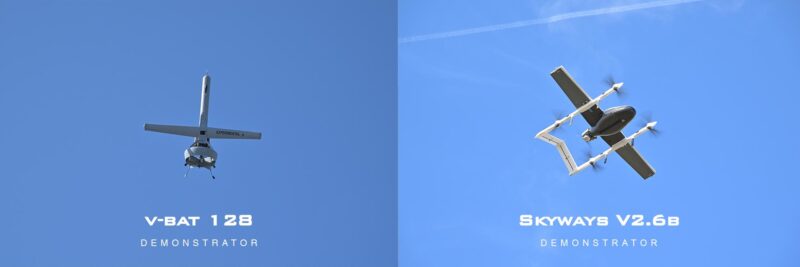
The Naval Air Warfare Center Aircraft Division demonstrated multiple unmanned systems in a first-of-its-kind mission to move supplies to ships at sea without the use of manned aircraft during an event at Naval Air Station Patuxent River in St. Inigoes, Maryland. During the demo, unmanned vehicles operated by industry partners transported cargo weighing less than 50 lbs. through long-range flights from ship-to-ship, ship-to-shore, and shore-to-ship situations carrying a variety of objects to mimic critical supplies. Both systems successfully delivered cargo over 200 nautical miles onto a moving ship underway. (U.S. Navy photos by Erik Hildebrandt)
The Naval Air Warfare Center Aircraft Division (NAWCAD) recently demonstrated multiple unmanned systems in a first-of-its-kind mission to move supplies to ships at sea without the use of manned aircraft during an event at Naval Air Station Patuxent River in St. Inigoes, Maryland.
The demo, held in collaboration with the Small Tactical Unmanned Aircraft Systems program (PMA-263), employed unmanned vehicles to transport cargo weighing less than 50 lbs., which accounts for 90% of Navy logistics deliveries.
“We are seeing an increase in manned and unmanned logistics,” said Col. Victor Argobright, PMA-263 program manager. “For the Marine Corps, the Commandant is enthusiastic about where we are going with unmanned logistics, and is beginning conversations about operations and contested environments. The Navy is currently identifying areas where unmanned logistics would be a critical enabler to operations at sea, and the Blue Water Maritime Logistics UAS is a great demonstration of this emerging requirement.”
During the event, industry partners Skyways Air Transportation, Inc., and Martin UAV operated their unmanned systems through long-range flights from ship-to-ship, ship-to-shore, and shore-to-ship situations, carrying a variety of objects to mimic critical supplies. Both systems successfully delivered cargo over 200 nautical miles onto a moving ship underway.
“[For the future], we are looking at continued long-term experimentation, how the fleet operates, and how we get the technology out to our Sailors,” said Tony Schmidt, NAWCAD’s Experimentation Office director.
The unmanned systems under consideration are capable of vertical take-off-and-landing to operate from most naval ships at sea and stations ashore, as well as systems that do not require dedicated launch and recovery equipment.
NAWCAD acquired the original Blue Water UAS prototype in 2019 to demonstrate long-range unmanned naval ship-to-ship and ship-to-shore cargo transport. Navy test pilots and engineers have since worked with industry partners to develop a system that best meets maritime requirements.
The Naval Air Warfare Center Aircraft Division is the Navy’s warfare center dedicated to aviation employing more than 17,000 military, civilian and contract personnel. It operates test ranges, laboratories and aircraft in support of test, evaluation, research, development and sustainment of everything flown by the Navy and Marine Corps. Based in Patuxent River, Maryland, the command also has major sites in St. Inigoes, Maryland, Lakehurst, New Jersey, and Orlando, Florida.

The Naval Air Warfare Center Aircraft Division demonstrated multiple unmanned systems in a first-of-its-kind mission to move supplies to ships at sea without the use of manned aircraft during an event at Naval Air Station Patuxent River in St. Inigoes, Maryland. During the demo, unmanned vehicles operated by industry partners transported cargo weighing less than 50 lbs. through long-range flights from ship-to-ship, ship-to-shore, and shore-to-ship situations carrying a variety of objects to mimic critical supplies. Both systems successfully delivered cargo over 200 nautical miles onto a moving ship underway. (U.S. Navy photos by Erik Hildebrandt)


